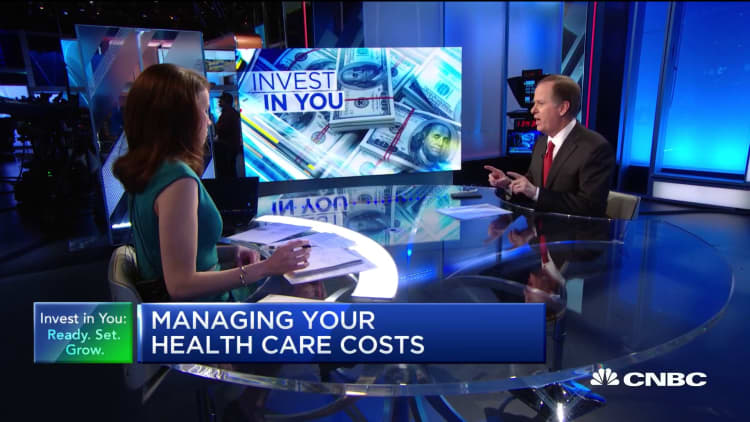Even if your employer offers you health insurance at work, chances are you're shelling out more money for medical care.
Last year, employers spent an average of $15,159 in premiums to cover a family of four, according to an analysis from the Kaiser Family Foundation. In all, that's an increase of 51% from a decade ago.
Things haven't become any more affordable for workers, either.
The average family of four paid a total of $7,726 in 2018, according to the foundation. That's an increase of 67% from 10 years ago.
Of that amount, families paid $4,706 in premium contributions for coverage at work, plus $3,020 in cost-sharing — that is, deductibles, coinsurance and copayments.
The cost of coverage has even outpaced wage growth, which has gone up by 26% over the last decade.
Bear in mind, employers still shoulder a large share of premiums. Employees also have the advantage of paying premiums on a pretax basis, as opposed to buying coverage elsewhere with after-tax dollars.
In contrast, on the private market, a family of four with an annual household income of $80,000 would pay $7,888 per year in premiums for a silver plan purchased through the health insurance marketplace — provided they are eligible for a premium tax credit of $9,961 per year, according to Kaiser.
Without the credit, the plan would cost close to $18,000 per year.
"Insurance companies get a lot of heat for raising deductibles and premiums," said Cynthia Cox, vice president at the Kaiser Family Foundation.
"But if you look at what's driving health-care costs year to year, it's the price of health care: the cost of doctor's visit, the cost of a hospital stay," she added. "That's really what's making those premiums and deductibles go up each year."
Rising deductibles

Deductibles — the amount you must pay before the insurance company provides benefits — now account for more than half of workers' out-of-pocket spending, Kaiser found. That's up from 26% in 2008.
Indeed, among workers in a plan with an annual deductible, the average for single coverage in 2018 was $1,573, Kaiser found.
That figure was even higher for high-deductible health plans: The annual average deductible there was $2,349 for single coverage.
High-deductible plans, however, often come with a health savings account or HSA — that is, a tax-advantaged account that allows workers to save pretax dollars, grow their money free of tax and use the money for qualified health expenses.
Managing expenses

Even with an HSA, workers are feeling the squeeze of rising deductibles. Employers are responding by backing away from offering exclusively high-deductible plans.
Indeed, a quarter of employers polled by the National Business Group on Health said they would offer only a high-deductible plan with an HSA, down from 39% in 2018.
In all, 147 large employers participated in the trade group's study.
"In my opinion, the No. 1 factor is that the deductible is large enough for some people at lower wage brackets that it's become a barrier to getting care," said Karen Frost, vice president of Health Strategy & Solutions at Alight Solutions.
"It's not just the premium, but that out-of-pocket cost, and what is the total cost the employee has to pay in a particular year if they have access to insurance and can't use it," she said.
Benefits enrollment season
With employee benefits season around the corner, workers should expect to see a few changes for 2020 — some of which can help lower costs.
Narrowing provider networks: Depending on the employer's location, companies may decide to limit the providers a worker can access in a given geographical area. In exchange, employees may get lower premiums and deductibles, said Cox of Kaiser.
Using accountable care organizations: Employers coordinate with insurers to create a network of primary care physicians and specialists that work together to manage a patient's care from start to finish.
More from Personal Finance:
Cut college costs a dollar at a time
Get the most from this tax-free source of income
This is how women are financially vulnerable in retirement
This is known as an accountable care organization. "The theory is that they work together to give more holistic care, which should be better for the member," said Frost.
Greater use of virtual care: Telemedicine, or virtual care, puts employees in touch with a nurse or doctor for different conditions, allowing them to skip a costly visit to the emergency room.
More than half of the respondents in the National Business Group on Health survey said they will offer more virtual care programs in 2020.
"Virtual care solutions bring health care to the consumer rather than the consumer to health care," said Brian Marcotte, CEO of the business group.


